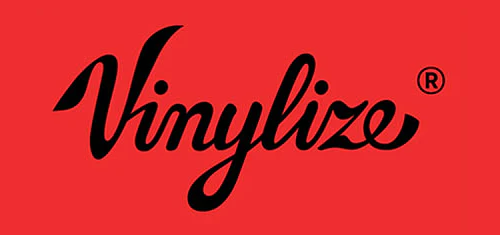From Eyewear to Audio: How Vinylize Turned Records Into Speakers

The Sound Saucer didn't just emerge from a design brief. Like our eyewear range, it came from the desire to experiment with what vinyl can become. In our Budapest workshop, founder Zack Tipton has spent over twenty years asking the question: what else can this material do?
The journey from eyewear to audio hasn’t been linear. But each setback has helped to refine the process. The breakthrough came with the idea to create volume by layering two vinyl records together, thereby preserving the structural integrity while maintaining the visible grooves that make each piece unique.

Working with Hungarian audio specialists Luxor Audio, our team spent over a year optimising the bowl geometry and refining the construction. The final shape balances acoustic projection with visual elegance: a form that couldn't exist without both disciplines collaborating.
Each Sound Saucer has passed through multiple hands: design, selecting records, heating, forming, assembling electronics, and quality testing. It's manufacturing that resists automation, where craft and technology meet on equal terms.

Behind the Workshop Doors
The Sound Saucer's evolution is visible in the designs that litter our workshop. Early concepts explored everything from flat disc amplifiers to vertical record stacks. The bigger issue, however, was manufacturing. This type of product cannot be outsourced. The design process started focusing on methods to efficiently produce a beautiful product that sounded excellent.
The turning point came with the creation of a heating chamber that would render the centre of each vinyl malleable. Pneumatic cylinders then press the heated vinyl into the desired shape. That single decision transformed the design, creating the distinctive double-bowl form that defines the final product.
Inside each Sound Saucer, natural wool acts as acoustic damping. The fibres absorb stray sound energy, preventing internal reflections from colouring the output. It's an old-school solution that modern audio still relies on: simple, effective, and honest about how sound behaves in enclosed spaces.

Philosophy
Vinylize's philosophy has always been straightforward: materials have multiple lives. A vinyl record pressed in 1978 didn't cease to matter when it stopped playing; it became raw material waiting for reinterpretation.
This isn't nostalgia; it's practicality, and people have to expand their concept of raw material. People see a disk that contains music; we see a sheet of plastic 1.3mm thick. The world produces enough objects. What it needs are systems that extend the usefulness of these objects without degrading their integrity. The Sound Saucer embodies this: each unit is comprised of four records that would otherwise occupy landfill space, transformed into a functional speaker that will serve for years.
The visible grooves and the traces of what each record once was: these aren't simply decorative choices. The Sound Saucer doesn't pretend to be something new from nothing. Its history lives on its surface. This approach requires constraint. Working with vinyl records requires an understanding that the material dictates terms. Those constraints, however, force creativity. The bowl shape, the layering technique, and the acoustic optimisation: all emerged from asking questions rather than imposing a predetermined form.
Q&A: Zack Tipton on Creating the Sound Saucer
Q: What sparked the idea to transform vinyl records into a functional speaker?
A: I am constantly searching for ways to upcycle this material. This is how Vinylize got started! I am approaching these as raw materials. Some people go to the lumber store, while others go to he rock quarry. I check what there are high quantities of and see if I can make something out of it that people will love.
Q: Can you walk us through the pneumatic pressing process that shapes each record?
A: I designed a method of tooling and assembled it onto tracks so the vinyl can move under it. There is a special heater which heats the centre of the vinyl. I made the first attempt by putting a heating coil into a large pot. This heats the vinyl, which is held down around the edges. The vinyl becomes soft, and then the whole tray is moved over to the press, which gives it its shape. A second vinyl is then pressed into the first. We make each side have 2 layers, which makes the Sound Saucer tougher.

Q: Why did you choose to preserve the visible grooves rather than hide them?
A: If I were to hide the grooves, I would be working with PVC granules. Sort of defeats the purpose and adds an extra step. Making things out of vinyl records is as limiting as it is rewarding.
Q: How do you source the vinyl records used for each Sound Saucer?
A: We have a few methods ranging from donations to overpressings. Interestingly, there are big differences in quality. The older the vinyl, the more brittle it is. A bit like human ageing.
Q: What was your personal "aha!" moment during the development process?
A: When I started making them, the outer vinyl was turned inward. The finished piece looked sort of like a megaphone, which was cool. But then I realised that I could just turn that piece around and increase the interior volume and make the whole thing look even better.
Q: Where does Vinylize go next after eyewear and audio?
A: I am very leery about predictions. Most of the time, I am wrong. All I can say is that the glasses kept me busy for 20 years, so maybe in 19 years I'll be able to answer this.

Discover the Sound Saucer at vinylize.com/sound-saucer. Prices start at $540, with limited-edition coloured vinyl versions launching soon for collectors and design enthusiasts. Each unit is handcrafted in Budapest and ships worldwide.



